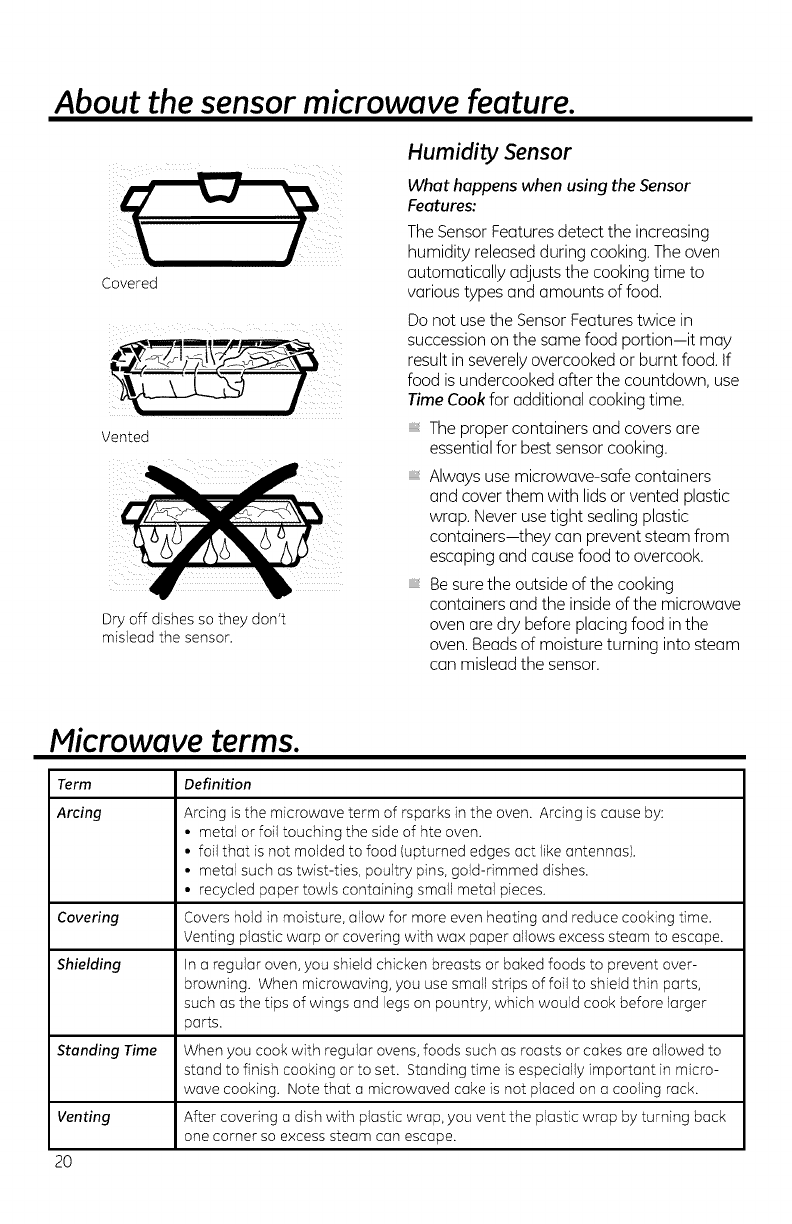
About the sensor microwave feature.
Covered
Vented
Dry off dishes so they don't
mislead the sensor.
Humidity Sensor
What happens when using the Sensor
Features:
TheSensor Featuresdetect the increasing
humidity releasedduring cooking. The oven
automatically adjusts the cooking time to
various types and amounts of food.
Do not usethe Sensor Featurestwice in
succession on the same food portion-it may
resultin severelyovercooked or burnt food. If
food isundercooked after the countdown, use
TimeCook for additional cooking time.
The proper containers and coversare
essentialfor best sensor cooking.
Always use microwave-safe containers
and cover them with lids or vented plastic
wrap. Neverusetight sealing plastic
containers-they can prevent steam from
escaping and cause food to overcook.
Besurethe outside of the cooking
containers and the inside of the microwave
oven are dry before placing food in the
oven. Beadsof moisture turning into steam
can mislead the sensor.
Microwave terms.
Term Definition
Arcing Arcing is the microwave term of rsparks in the oven. Arcing is cause by:
• metal or foil touching the side of hte oven.
• foil that is not molded to food (upturned edges act like antennasl.
• metal such as twist-ties, poultry pins, gold-rimmed dishes.
• recycled paper towls containing small metal pieces.
Covering Covers hold in moisture, allow for more even heating and reduce cooking time.
Venting plastic warp or covering with wax paper allows excess steam to escape.
Shielding In a regular oven,you shield chicken breasts or baked foods to prevent over-
browning. When microwaving, you usesmall strips of foil to shield thin parts,
such as the tips of wings and legs on pountry, which would cook before larger
parts.
Standing Time When you cook with regular ovens, foods such as roasts or cakes are allowed to
stand to finish cooking or to set. Standing time is especially important in micro-
wave cooking. Note that a microwaved cake is not placed on a cooling rack.
Venting After covering a dish with plastic wrap, you vent the plastic wrap by turning back
one corner so excess steam can escape.
20


















